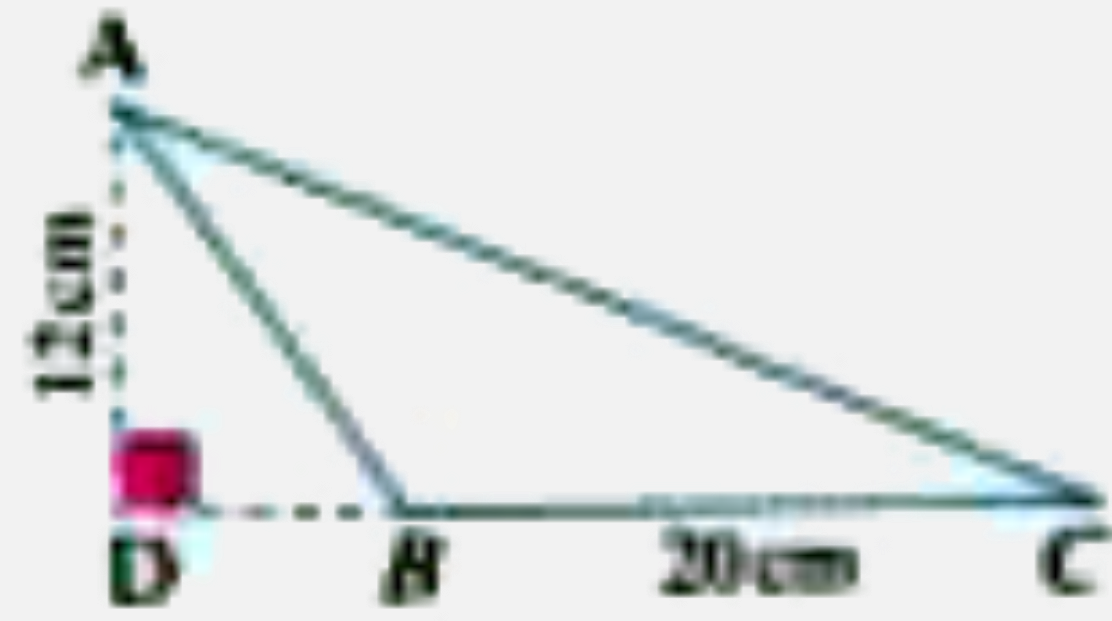In ABC with usual notations, if r=1,r1=7andR=3, the (a)ABC is equilateral (b) acute angled which is not equilateral (c) obtuse angled (d) right angled
To determine the type of triangle ABC given the inradius r=1, the exradius r1=7, and the circumradius R=3, we can use the relationship between these parameters.
1. Identify the relationship: We know the relationship between the inradius r, the exradius r1, and the circumradius R. The formula we will use is:
r1−r=4R⋅sinA2⋅cosB2⋅cosC2
2. Substitute the known values: Substitute r1=7, r=1, and R=3 into the equation:
7−1=4⋅3⋅sinA2⋅cosB2⋅cosC2
This simplifies to:
6=12⋅sinA2⋅cosB2⋅cosC2
3. Rearranging the equation: Divide both sides by 12:
12=sinA2⋅cosB2⋅cosC2
4. Using trigonometric identities: We know that:
cosB2⋅cosC2=sin(90∘−A2)=sinB+C2
Thus, we can rewrite the equation as:
12=sinA2⋅sinB+C2
5. Using the angle sum property: Since A+B+C=180∘, we can express B+C as 180∘−A:
12=sinA2⋅sin(90∘−A2)
6. Simplifying further: This gives us:
12=sinA2⋅cosA2
Using the identity sinA=2sinA2cosA2:
12=12sinA
7. Solving for A: This implies:
sinA=1
Therefore, A=90∘.
8. Conclusion: Since angle A is 90∘, triangle ABC is a right-angled triangle.
Final Answer:
The triangle ABC is right-angled (option d).
r1−r=4R⋅sinA2⋅cosB2⋅cosC2
7−1=4⋅3⋅sinA2⋅cosB2⋅cosC2
This simplifies to:
6=12⋅sinA2⋅cosB2⋅cosC2
12=sinA2⋅cosB2⋅cosC2
cosB2⋅cosC2=sin(90∘−A2)=sinB+C2
Thus, we can rewrite the equation as:
12=sinA2⋅sinB+C2
12=sinA2⋅sin(90∘−A2)
12=sinA2⋅cosA2
Using the identity sinA=2sinA2cosA2:
12=12sinA
sinA=1
Therefore, A=90∘.
The triangle ABC is right-angled (option d).
Topper's Solved these Questions
Similar Questions
Can a triangle have a, two acute, b. two obtuse, and c. two right angles.
View SolutionIf in a triangle ABC,tanA+tanB+tanC>0 the triangle is (A) acute angled triangle (B) obtuse angled (C) right angled (D) none of these
View SolutionIf one side of a triangle is double the other, and the angles on opposite sides differ by 600, then the triangle is equilateral (b) obtuse angled (c) right angled (d) acute angled
View SolutionIn ΔABC with usual notation r1bc+r2ca+r3ab is
View SolutionIf one angle of a triangle is equal to the sum of the other two angles, then the triangle is (a) an isosceles triangle (b) an obtuse triangle (c) an equilateral triangle (d) a right triangle
View SolutionFind the ara of the given obtuse-angled triangle ABC.

View SolutionIf cos2A+cos2B+cos2C=1,thenABC is (a)equilateral (b) isosceles (c)right angled (d) none of these
View SolutionMatch the following :Measures of Triangle Type of Triangle(i) 3 sides of equal length (a) Scalene(ii) 2 sides of equal length (b) Isosceles right angled(iii) All sides are of different length (c) Obtuse angled(iv) 3 acute angles (d) Right angled(v) 1 right angle (e) Equilateral(vi) 1 obtuse angle (f) Acute angled(vii) 1 right angle with two sides of equal length (g) Isosceles
View SolutionAn angle of measure 140∘ is
View SolutionIn a triangle ABC with usual notation bcosecB=a, then value of b+cr+R is
View Solution
